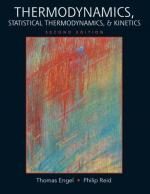|
This section contains 656 words (approx. 3 pages at 300 words per page) |

|
The study of oscillating reactions is the study of periodic changes in chemical reactions. In an oscillating chemical reaction, the concentrations of the reactants and products change with time in a periodic or quasi-periodic manner. Chemical oscillators exhibit chaotic behavior, in which concentrations of products and the course of a reaction depend on the initial conditions of the reaction.
Scientists have a long-standing fascination with the complexities of oscillating systems. In the seventeenth century, the English-Irish chemist Robert Boyle reported the periodic "flaring up" of phosphorus in contact with the air.
The classic modern example of an oscillating reaction is the Belousov-Zhabotinsky reaction that yields a red solution that turns blue at varying intervals of time. In a stirred vessel, the Belousov-Zhabotinsky reaction mixture will change color from red to blue dozens or hundreds of times before equilibrium is established. If the mixture is poured into...
|
This section contains 656 words (approx. 3 pages at 300 words per page) |

|


